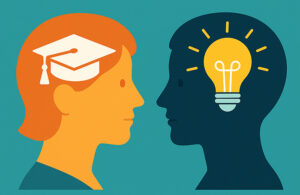The Mental Health Benefits of Bubble Pop: Digital Relaxation for Modern Minds
In our fast-paced digital world, finding effective ways to unwind and destress has become increasingly important. Bubble Pop, a simple yet engaging browser game, offers a surprisingly effective method for relaxation and mental refreshment. Let’s explore the psychological benefits of this satisfying digital activity and how it can become part of your mental wellness routine.
How Bubble Pop Relaxes Your Mind
1. Mindful Engagement Through Simple Interactions
Bubble Pop encourages a state similar to mindfulness meditation through its simple, repetitive actions. The act of popping colorful bubbles requires just enough attention to keep your mind engaged, but not so much that it becomes stressful. This balance creates what psychologists call “flow state” – a mental condition where you’re completely absorbed in an activity, temporarily disconnecting from worries and stressors.
The gentle popping sensation accompanied by visual feedback provides immediate gratification with each interaction. This constant positive reinforcement loop triggers small dopamine releases, creating a subtle sense of accomplishment and pleasure.
2. Color Therapy and Visual Stimulation
The game’s vibrant, customizable color palette isn’t just visually appealing – it serves a therapeutic purpose. Color psychology research suggests that exposure to different colors can influence our mood and mental state:
- Blue tones can induce calmness and reduce anxiety
- Green shades promote restfulness and alleviate stress
- Warm colors like orange and yellow can boost energy and positive feelings
By toggling between color modes, users can customize their visual experience based on their current emotional needs, whether seeking stimulation or tranquility.
3. Rhythmic Actions as Stress Reduction
The rhythmic pattern of popping bubbles creates a predictable sensory experience that can help regulate breathing and heart rate. Similar to techniques used in sensory integration therapy, the repeating action-reward cycle helps ground the mind in the present moment.
Bubble Pop provides what therapists call “adaptive sensory input” – controlled stimulation that helps the nervous system find balance. For individuals dealing with anxiety or sensory processing challenges, this type of structured sensory engagement can be particularly beneficial.
4. Low-Stakes Achievement and Reward
Unlike competitive games that can actually increase stress levels, Bubble Pop offers achievement without pressure. The scoring system provides satisfaction without significant consequences for failure. This creates a safe space for the brain to experience reward without the cortisol spike that comes with high-stakes activities.
The game tracks statistics like bubbles popped and score, providing a sense of accomplishment without judgment. This gentle tracking creates just enough investment to maintain interest without triggering performance anxiety.
Scientific Perspective: Why Digital Bubble Popping Works
Research in cognitive psychology indicates that brief mental breaks engaging different parts of the brain can significantly improve overall cognitive function. Digital activities that provide controlled sensory input, like Bubble Pop, serve as effective “mental palate cleansers” between more intensive tasks.
A 2019 study from the Journal of Behavioral Addictions found that casual games with simple mechanics can reduce physiological symptoms of stress, including lowering cortisol levels and normalizing heart rate variability. These effects were most pronounced when the games provided:
- Immediate feedback
- Simple, intuitive controls
- Visually pleasing aesthetics
- Non-threatening challenges
Bubble Pop incorporates all these elements, making it an effective digital relaxation tool backed by cognitive science.
Incorporating Bubble Pop Into Your Wellness Routine
For Quick Stress Relief
Keep the Bubble Pop tab open during your workday for micro-breaks. Just 2-3 minutes of bubble popping between tasks can help reset your focus and reduce accumulated tension. The game requires minimal loading time and can be instantly engaged with, making it perfect for brief mental refreshment.
As Part of a Wind-Down Ritual
Evening screen time can interfere with sleep quality, but not all digital activities have the same impact. Using Bubble Pop as part of a gradual digital wind-down (replacing more stimulating content like social media or news) can help signal to your brain that it’s time to transition toward rest.
For Mindfulness Training
Use Bubble Pop as an entry point to more formal mindfulness practices. Pay attention to the sensations, sounds, and visual feedback while playing. Notice how your attention moves and when your mind wanders. This awareness can strengthen the same mental muscles used in meditation.
Beyond Entertainment: Therapeutic Applications
For individuals with certain conditions, simple interactive games like Bubble Pop can serve specific therapeutic purposes:
- Anxiety management: Provides distraction and sensory regulation during anxious episodes
- ADHD support: Offers dopamine stimulation through a controlled, non-addictive mechanism
- Sensory processing: Creates predictable sensory experiences that can be self-regulated
- Cognitive exercise: Improves hand-eye coordination and visual tracking in a low-pressure environment
Conclusion: Digital Wellness Through Playful Interaction
While no digital activity can replace comprehensive mental health care or the benefits of outdoor activities, tools like Bubble Pop represent a positive evolution in how we think about digital wellness. Rather than viewing all screen time as harmful, we can recognize the potential for certain digital experiences to contribute positively to our mental state.
Bubble Pop reminds us that relaxation doesn’t always require complete disconnection from technology – sometimes, it’s about finding the right kind of digital engagement. In just a few minutes of colorful bubble popping, you might find your breathing has slowed, your shoulders have dropped, and your mind has cleared just enough to approach the rest of your day with renewed focus and calm.
So the next time you feel overwhelmed, consider taking a bubble-popping break. Your mind will thank you for the moment of playful digital meditation.
Visit research.help for more resources on digital wellness and mental health.








